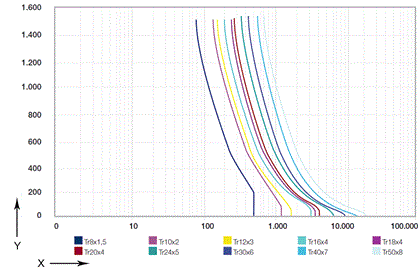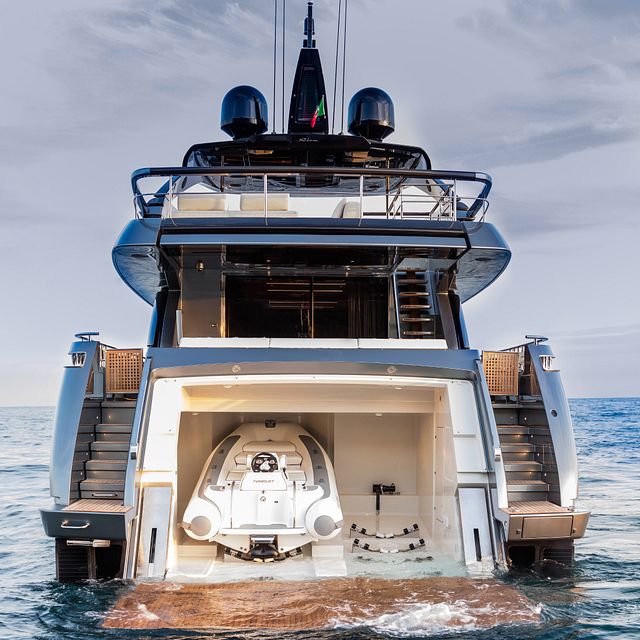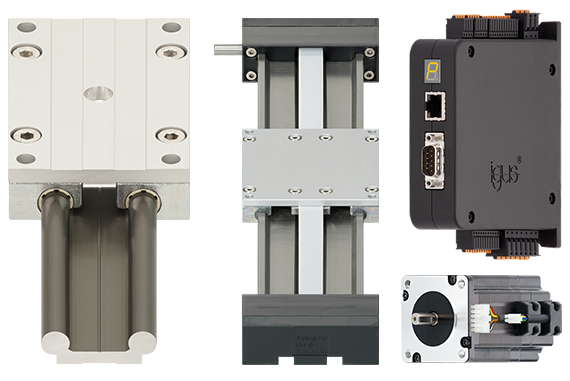How can you convert rotational to linear motion?
In this tech talk from the igus® linear motion experts, discover differences between common types of lead screw technology, such as wear rate, explore a range of lead screw nut options, and more.
Lead screws are a common technology used to convert rotational to linear motion, and are often used to provide actuation to a set of linear bearings. Plastic lead screw nuts are an excellent alternative to ball screws in many applications where extreme precision (micron level) is not required.
They require no external lubricants, making them suitable in applications ranging from sensitive lab instruments to packaging machines. Trapezoidal lead screws are also ideal for 3D printers, as the industry is standardized on metric motion profiles and components. They are also very easy to customize and found in a number of geometries, from coarse threads for higher torque output to high-helix designs for high-speed applications.
Traditional materials for lead screw nuts are typically brass, oil-impregnated bronze, and simple plastic materials. igus® tribo-plastics, such as iglide® J and iglide® W300, are composite plastic materials, which offer lower friction and wear values than many other materials across an entire range of applications.
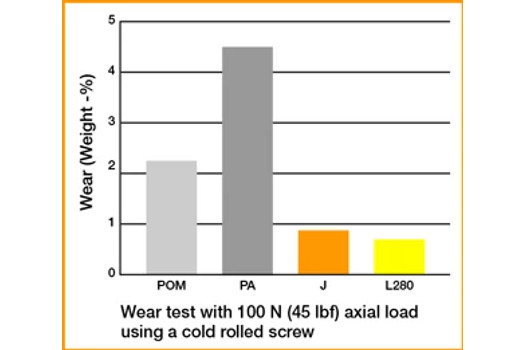
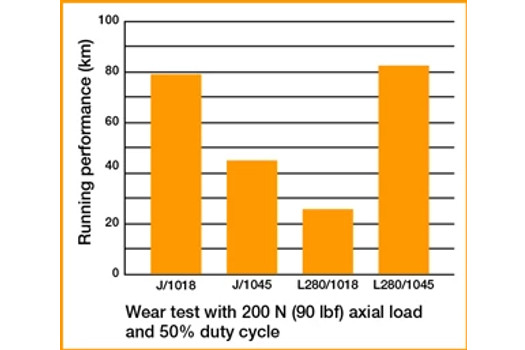
Note: L280 in the graphs above refers to iglide W300
These composites operate free of any oil or grease, and do not require maintenance. They are able to operate on traditional ferrous lead screws, as well as low-weight anodized aluminum lead screws.
ACME and trapezoidal screws
The single-start ACME thread is the most common form of the lead screw nut in North America. Developed in the mid-1800s, they can be found on all types of machines, and are most suited to low-cycle or positioning applications. Their trapezoidal shape makes them better suited for the axial loading found in power transmission applications.
Standards for single-start ACME screws apply to the inner thread dimensions. ACME lead screws are called out by their diameter, and then the threads-per-inch (TPI). For example: A ¾-20 ACME has a major ID of 0.75” and 20 TPI.
To calculate the lead (linear travel in inches per one screw revolution) simply divide one inch by the TPI. In the above example a 20-TPI nut will travel 0.05” per one revolution. Trapezoidal lead screws, sometimes referred to as “metric ACME”, are almost identical to ACME lead screw forms, and are more commonplace in Europe. The major difference from regular ACME is that they are based on metric dimensions, and the angle differs by 1°.
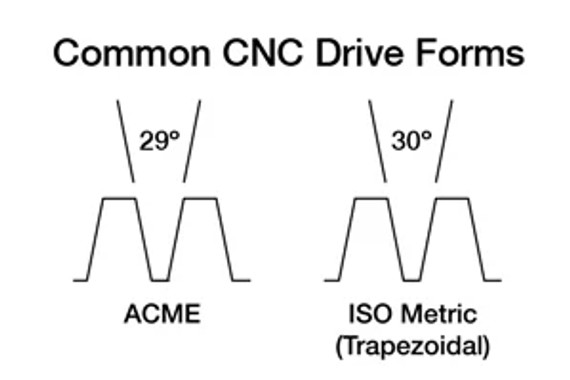
Trapezoidal lead screws are generally covered by ISO standards for inner and outer geometry. Unlike ACME, they are specified by their major inner-diameter (in mm), and then their pitch (in mm). For example, a trapezoidal 10mm ID screw with a 2mm lead is called out by: TR 10 x 2
It is important to note that we have been discussing single-start screws. This means that there is one continuous thread on the individual screw. Many manufacturers offer multi-start ACME screws, but the geometries are not necessarily compatible from one manufacturer to another.
Multi-start lead screws benefit from higher speed (linear feed rate) capabilities compared to single-start screws. However, they lose their mechanical advantage, meaning they require higher input torque than single-start screws.
Lead vs. pitch
The lead of a screw is defined as the linear travel of the nut per revolution of the screw. In single-start geometries, the lead and pitch of a screw are identical. On the other hand, in multi-start screws, the lead is greater than the pitch, as shown in the image on the right.
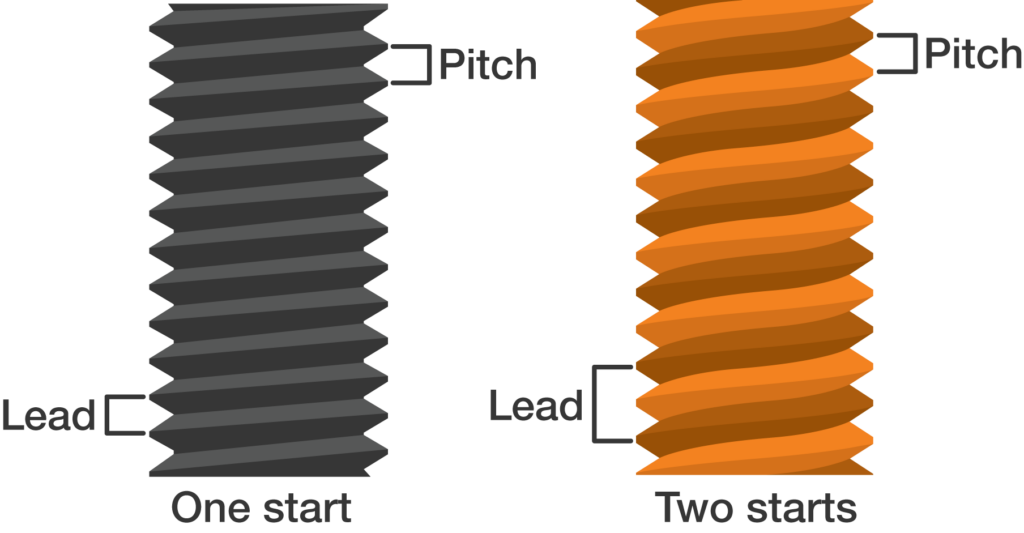
Read more: What is screw pitch, and how is it different from screw lead?
Self-locking and back-driving
One important feature of single-start ACME or trapezoidal systems is that they are not back-drivable. In other words, they will not fall under their own weight of the weight of the payload. Instead, the screw must be turned for the system to move.
In many applications, this may eliminate the need for a motor brake, and holding torque requirements on the motor may be reduced in some applications — a major benefit over other types of actuators.
Backlash, and ways to fight it
Since lead screw nuts glide instead of roll, there is an inherent amount of axial clearance between the screw and the nut. This clearance must be overcome by the screw before its engagement with the nut provides linear motion. This means there is additional tolerance in the rotation of the screw as it translates to linear positioning. Companies such as igus have developed solutions to remove or reduce this backlash completely.
igus offers zero-backlash nuts for its dryspin high-helix family of products, as well as anti-backlash nuts for its trapezoidal (metric ACME) nuts. drylin “ZB” zero-backlash assemblies employ two nuts, which are forced apart from each other through the use of a torsion spring. This takes up the axial clearance, providing compensation throughout the lifetime of the system.
The “AB” anti-backlash nut is designed with a small secondary section in the ID of the nut, which preloads the system, helping to reduce clearance. drylin “LC” low-cost nuts offer zero backlash ideal for most applications.

High-helix dryspin technology
igus developed dryspin, a new high-helix geometry for high-speed applications. While ACME and trapezoidal lead screw systems are good for positioning high loads, these high-helix threads are better suited for high cycles and speeds, but are also ideal for low-load applications. The screws were designed asymmetric to the plastic nuts, optimizing lifetime while also offering high efficiency.
Load, speed, and lifetime
Typical loads for igus ACME and trapezoidal threaded nuts are higher than for high-helix options, as is represented in the graphs below. Static loads up to 28,900 N (6,502 lbf) are possible with larger diameter screws. High-helix lead screw systems are capable of loads up to 1,285 N (291 lbf).
